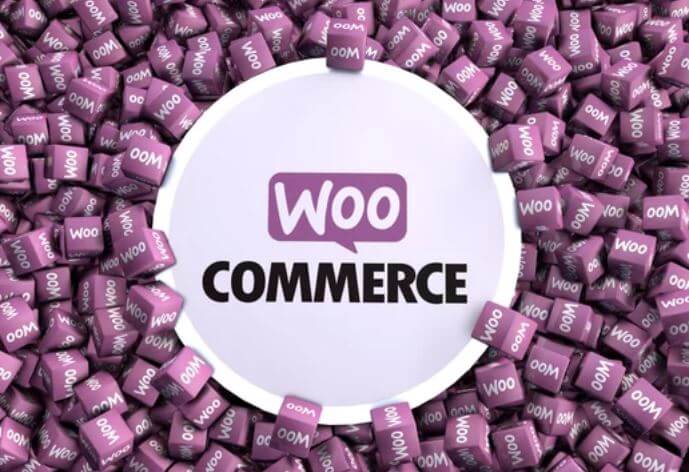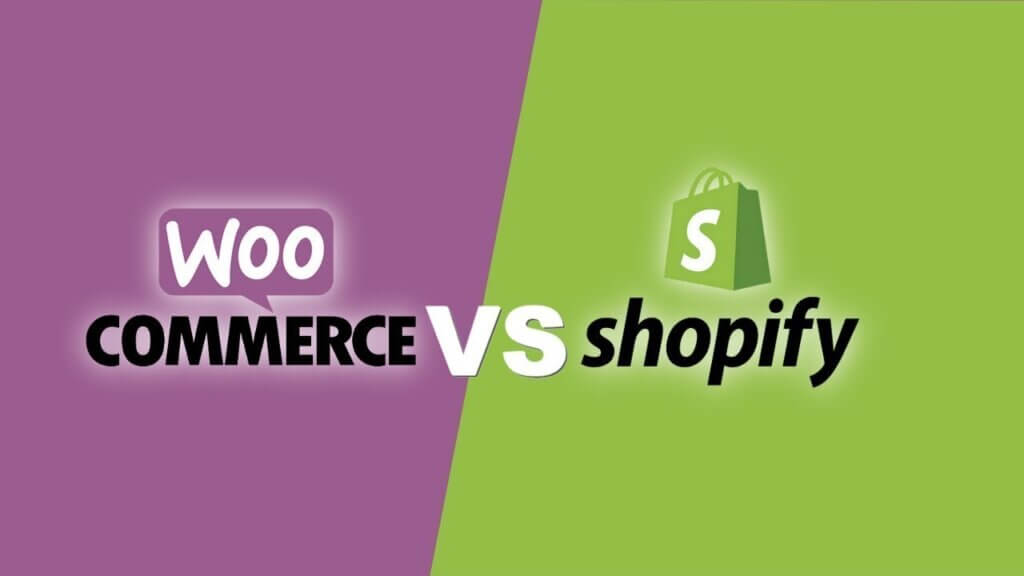WooCommerce
Introduction to WooCommerce:
If you want to build an online store, you’re in the right place. WooCommerce is one of the most popular e-commerce platforms available, and it’s free to use. In this article, we’ll cover everything you need to know about WooCommerce, from what it is and why it’s popular to setting up your store and managing orders.
What is WooCommerce?
WooCommerce is an e-commerce platform that allows you to create and manage an online store. It’s a plugin for WordPress, so if you already have a WordPress website, you can easily add WooCommerce. WooCommerce comes with all the features you need to start selling online, including product pages, shopping carts, checkout pages, and payment processing.
Features of WooCommerce:
WooCommerce comes with various features to help you create a successful online store. Some of the most popular features include:
- Product management: You can easily add and manage products, including descriptions, images, and woocommerce pricing.
- Payment processing: WooCommerce supports a range of payment methods, including credit cards, PayPal, and Stripe.
- Shipping options: You can set up shipping options for your store, including free shipping, flat-rate shipping, and real-time carrier rates.
- Tax management: WooCommerce can automatically calculate taxes based on your store’s and customer’s locations.
- Reporting and analytics: You can track your store’s performance using built-in reporting and analytics tools.
- Customization options: WooCommerce is highly customizable, with various themes and plugins for woocommerce available to help you create the perfect store.
Advantages of using WooCommerce:
There are many advantages to using WooCommerce as your e-commerce platform, including:
- Easy to use: WooCommerce is designed to be easy to use, even if you don’t have any technical experience.
- Free to use: WooCommerce is free to use, with no ongoing fees or charges.
- Highly customizable: You can customize almost every aspect of your store, from the design to the functionality.
- Large community: WooCommerce has a large community of users and developers, so you can find help and support when needed.
- Integration with WordPress: If you already have a WordPress website, adding WooCommerce is easy.
Conclusion:
WooCommerce is a powerful e-commerce platform that can help you create and manage an online store. With its range of features, easy-to-use interface, and extensive community, it’s no surprise that it’s one of the most popular e-commerce platforms. Whether you’re a small business owner or a large retailer, WooCommerce is an excellent choice for selling online.
Setting up WooCommerce:
Once you’ve decided to use WooCommerce as your e-commerce platform, the next step is to set it up. This article will cover everything you need to know about setting up WooCommerce, including the requirements, installation process, and configuration options.
Requirements for using WooCommerce:
Before you can use WooCommerce, you’ll need to make sure your website meets the following requirements:
- WordPress: You’ll need to have a WordPress website installed and running.
- Hosting: You’ll need a web hosting provider to host your website.
- SSL Certificate: You’ll need an SSL certificate to secure your website and process payments.
- PHP version: WooCommerce requires PHP version 7.2 or later.
- MySQL version: WooCommerce requires MySQL version 5.6 or later.
Installing WooCommerce:
Once you’ve checked that your website meets the requirements, you can install WooCommerce. Here’s how:
- Log in to your WordPress dashboard.
- Click on Plugins > Add New.
- Search for “WooCommerce” in the search bar.
- Click on the “Install Now” button next to the WooCommerce plugin.
- Once the installation is complete, click on the “Activate” button.
Configuring WooCommerce settings:
After installing WooCommerce, you must configure the settings to set up your store. Here are some of the most significant locations you’ll need to configure:
- General Settings: You can set your store name, address, and currency.
- Products Settings: You can set up your product options, such as weight, dimensions, and variations.
- Payments Settings: You can set up payment methods, including PayPal, credit cards, and Stripe.
- Shipping Settings: You can set up your shipping options, including flat rate, free shipping, and real-time carrier rates.
- Tax Settings: You can set your tax rates and rules, including location-based taxes and tax exemptions.
- Checkout Settings: You can set up your checkout options, including guest and checkout fields.
Once you’ve configured these settings, your store can start selling products.
Conclusion:
Setting up WooCommerce is a crucial step in creating a successful online store. By checking the requirements, installing the plugin, and configuring the settings, you can create a store tailored to your business needs. With its powerful features and ease of use, WooCommerce is an excellent choice for anyone selling products online.
Creating Products in WooCommerce:
After setting up your WooCommerce store, the next step is adding products. In this article, we’ll cover everything you need to know about creating products in WooCommerce, including the different product types, how to add effects, and how to manage product variations.
Product Types in WooCommerce:
WooCommerce supports several different types of products, including:
- Uncomplicated Products: These are products with a single price and no options or variations.
- Variable Products: These are products with multiple variations, such as sizes or colors.
- Grouped Products: These are products sold together, such as kitchen utensils.
- External Products: These are products sold on another website but listed in your store.
- Downloadable Products: These are products that customers, such as digital products or software, can download.
Adding Products in WooCommerce:
To add a product to WooCommerce, follow these steps:
- Log in to your WordPress dashboard.
- Click on Products > Add New.
- Enter the product title, description, and image.
- Set the product type, price, and other details.
- Click on “Publish” to save the product.
Managing Product Variations in WooCommerce:
You’ll need to set up product variations if you’re selling variable products, such as clothing with different sizes and colors. Here’s how:
- In the product edit screen, select “Variable Product” as the product type.
- Click on the “Attributes” tab and add the attributes you want to use, such as “Size” or “Color.”
- Click the “Variations” tab and select “Add Variation” to create a new variation.
- Set the variation details, such as the price and availability.
- Click on “Save Changes” to save the variation.
You can repeat these steps to create as many variations as you need.
Conclusion:
Creating products in WooCommerce is straightforward, with options for simple products and more complex variable products. Adding products and managing variations can create a store tailored to your business needs. With its powerful features and ease of use, WooCommerce is an excellent choice for anyone selling products online.
Managing Orders in WooCommerce
After setting up your WooCommerce store and adding products, you’ll receive customer orders. In this article, we’ll cover everything you need to know about managing orders in WooCommerce, including viewing and editing orders, processing payments, and handling shipping.
Viewing and Editing Orders in WooCommerce:
To view and edit orders in WooCommerce, follow these steps:
- Log in to your WordPress dashboard.
- Click on WooCommerce > Orders.
- Select the order you want to view or edit.
- Click the “Edit” button to change the order, such as updating the shipping information or adding notes.
- Click on “Save Order” to save the changes.
Processing Payments in WooCommerce:
WooCommerce supports several payment gateways, including PayPal, Stripe, and credit cards. Here’s how to process payments in WooCommerce:
- Log in to your WordPress dashboard.
- Click on WooCommerce > Orders.
- Select the order you want to process.
- Click on the “Process Payment” button.
- Select the payment gateway you want to use and follow the instructions to complete the payment.
Handling Shipping in WooCommerce:
WooCommerce supports shipping methods, including flat, accessible, and real-time carrier rates. Here’s how to handle shipping in WooCommerce:
- Log in to your WordPress dashboard.
- Click on WooCommerce > Orders.
- Select the order you want to ship.
- Click on the “Ship” button.
- Enter the shipping details, such as the shipping carrier and tracking number.
- Click on “Save Tracking Information” to save the details.
You can also print shipping labels and packing slips directly from WooCommerce.
Conclusion:
Managing orders in WooCommerce is an essential part of running an online store. By viewing and editing orders, processing payments, and handling shipping, you can provide a seamless shopping experience for your customers. With its powerful features and ease of use, WooCommerce is an excellent choice for anyone selling products online.
Payment and Shipping Options in WooCommerce:
Setting up payment and shipping options is critical when running an online store. In this article, we’ll cover everything you need to know about payment and shipping options in WooCommerce, including the different payment and shipping methods, how to set them up, and how to manage them.
Payment Options in WooCommerce:
WooCommerce supports several payment gateways, including PayPal, Stripe, and credit cards. Here’s how to set up payment options in WooCommerce:
- Log in to your WordPress dashboard.
- Click on WooCommerce > Settings.
- Click on the “Payments” tab.
- Please select the payment gateway you want to use and follow the instructions to set it up.
- Configure the payment settings, such as transaction fees and payment processing.
You can also enable and disable payment methods, set up payment gateways for specific countries or regions, and customize payment method descriptions.
Shipping Options in WooCommerce:
WooCommerce supports shipping methods, including flat, accessible, and real-time carrier rates. Here’s how to set up shipping options in WooCommerce:
- Log in to your WordPress dashboard.
- Click on WooCommerce > Settings.
- Click on the “Shipping” tab.
- Please select the shipping method you want to use and follow the instructions to set it up.
- Configure the shipping settings, such as shipping rates and shipping zones.
You can also enable and disable shipping methods, set up shipping rates based on weight or destination, and customize shipping method descriptions.
Managing Payment and Shipping Options in WooCommerce:
To collect payment and shipping options in WooCommerce, follow these steps:
- Log in to your WordPress dashboard.
- Click on WooCommerce > Settings.
- Click on the “Payments” or “Shipping” tab.
- Make the necessary changes, such as enabling or disabling payment or shipping methods, updating payment or shipping settings, or adding new payment or shipping methods.
- Click on “Save Changes” to save the changes.
Conclusion:
Setting up payment and shipping options in WooCommerce is crucial to the success of your online store. By configuring payment and shipping methods, customizing settings, and managing opportunities, you can provide a seamless shopping experience for your customers. With its powerful features and ease of use, WooCommerce is an excellent choice for anyone selling products online.
Extending WooCommerce:
WooCommerce is a compelling platform for running an online store. However, if you need additional functionality not available out of the box, you can extend WooCommerce using plugins and add-ons. In this article, we’ll cover everything you need to know about growing WooCommerce, including the types of extensions available and how to install and manage them.
Types of Extensions in WooCommerce:
There are several types of extensions available for WooCommerce, including:
- Plugins – Plugins are standalone pieces of software that add new features and functionality to WooCommerce. Thousands of plugins are available, including payment gateways, shipping methods, marketing tools, and more.
- Themes – Themes are pre-built templates that determine the look and feel of your online store. Many themes are specifically designed for WooCommerce, including free and premium options.
- Add-ons – Add-ons are small pieces of code that extend the functionality of a plugin or theme. For example, an add-on might add a new feature to a payment gateway plugin or customize the appearance of a piece.
Installing and Managing Extensions in WooCommerce:
To establish and manage extensions in WooCommerce, follow these steps:
- Log in to your WordPress dashboard.
- Click on WooCommerce > Extensions.
- Browse the available extensions, or use the search function to find a specific extension.
- Click the “Buy Now” or “Download” buttons to purchase or download the extension.
- Install and activate the extension following the instructions provided.
You can also manage your installed extensions from the WooCommerce > Extensions page. You can enable and disable extensions, update extensions, and configure extension settings here.
Conclusion:
Extending WooCommerce plugins, themes, and add-ons is a great way to add new functionality and customize your online store. With thousands of extensions available, you can add everything from payment gateways to marketing tools to your WooCommerce store. Installing and managing extensions allows you to create a powerful and flexible online store that meets your needs.
WooCommerce Security:
As an online store owner, keeping your website secure is essential to protect your customers’ personal and financial information. In this article, we’ll cover everything you need to know about WooCommerce security, including common threats and vulnerabilities, best practices for securing your website, and tools you can use to improve your website’s security.
Common Threats and Vulnerabilities:
There are several common threats and vulnerabilities that online stores face, including:
- Malware and viruses – Malware and viruses can infect your website and compromise your customers’ personal and financial information.
- Brute force attacks – Brute force attacks are when hackers try to gain access to your website by guessing your login credentials.
- SQL injections are when hackers use code to access your website’s database and steal data.
- Cross-site scripting (XSS) – XSS attacks are when hackers inject malicious code into your website that can steal data or redirect visitors to other websites.
Best Practices for Securing Your Website:
Here are some best practices for securing your WooCommerce website:
- Keep your website and plugins updated – Regularly updating your website and plugins can help prevent vulnerabilities and exploits.
- Use strong passwords – Use strong passwords that are difficult to guess and change regularly.
- Limit access – Only give access to your website to people who need it, and use different access levels for other users.
- Install security plugins – Install plugins that can help protect your website from malware, brute force attacks, and other threats.
- SSL – SSL encryption can help protect your customers’ personal and financial information by encrypting data sent between their browsers and your website.
Tools for Improving WooCommerce Security:
Here are some tools you can use to improve your WooCommerce security:
- Security plugins – Several security plugins for WooCommerce, such as Wordfence and Sucuri, can help protect your website from threats.
- SSL certificates – You can purchase and install SSL certificates to encrypt data sent between your customer’s browsers and your website.
- Two-factor authentication – Two-factor authentication can add an extra layer of security to your website by requiring users to enter a code in addition to their password.
Conclusion:
Securing your WooCommerce website is essential to protect your customers’ personal and financial information. By following best practices and using tools like security plugins, SSL certificates, and two-factor authentication, you can help prevent common threats and vulnerabilities. With its powerful features and flexibility, WooCommerce is an excellent choice for anyone looking to sell products online, and by taking steps to secure your website, you can create a safe and secure shopping experience for your customers.
Final Conclusion
WooCommerce is a powerful and flexible platform for building an online store. It’s easy to use, customizable, and offers many features and extensions to help you sell products online.
Whether you’re a small business owner looking to start selling products online, or an experienced eCommerce professional looking to switch to a new platform, WooCommerce is an excellent choice.
By following best practices for setting up and managing your store, creating and managing products, and securing your website, you can create a successful and profitable online business with WooCommerce.
Some key takeaways from this article include:
- Setting up your WooCommerce store correctly ensures it runs smoothly and efficiently.
- Creating and managing products in WooCommerce is easy, and several options exist for customizing product pages and managing inventory.
- Managing orders and customer data is simple with WooCommerce, and there are several options for integrating with popular payment and shipping providers.
- WooCommerce offers a wide range of extensions and integrations to help you customize and extend the functionality of your online store.
- Securing your website is essential to protect your customers’ personal and financial information, and there are several best practices and tools you can use to improve WooCommerce security.
In conclusion, WooCommerce is an excellent choice for starting an online store. By following best practices and utilizing the many features and extensions available, you can create a successful and profitable eCommerce business with WooCommerce.
F.A.Q
Is Shopify similar to WooCommerce?
Yes, Shopify and WooCommerce are both eCommerce platforms that allow you to create and manage an online store. However, there are some critical differences between the two platforms.
Shopify is a hosted platform that provides hosting for your website, and you can use its built-in tools and features to manage your store. Shopify is designed to be an all-in-one solution, offering features like hosting, payment processing, and shipping integration.
WooCommerce, on the other hand, is a self-hosted plugin for WordPress. This means you must have your hosting and WordPress installation to use WooCommerce. WooCommerce is designed to work with WordPress, and it offers a wide range of customization options and extensions that allow you to build a fully customizable online store.
In summary, both Shopify and WooCommerce are eCommerce platforms that allow you to create and manage an online store, but they differ in their approach to hosting and features. Shopify is an all-in-one solution, while WooCommerce is a customizable plugin for WordPress.
Is WooCommerce completely free?
WooCommerce is a free and open-source plugin for WordPress, meaning anyone can download and use it for free. However, some costs are associated with setting up and running a WooCommerce store.
For example, you must purchase a domain name and hosting to set up your website. You may also need to buy a WordPress theme or hire a developer to customize your store’s design. Some advanced features or extensions may also require a one-time or ongoing fee.
Furthermore, while WooCommerce, you will still need to pay payment processing fees, which vary depending on the payment gateway you choose. Shipping costs will also vary depending on the shipping provider you use.
In summary, there are still costs associated with setting up and running a WooCommerce store, such as web hosting, payment processing fees, shipping costs, and possibly purchasing additional extensions or hiring a developer.
Woocommerce vs Shopify?
WooCommerce and Shopify are two popular eCommerce platforms, each with strengths and weaknesses. Here are some key differences between the two platforms:
- Hosting: Shopify is a fully hosted platform, meaning that they provide web hosting, security, and backups for your online store. WooCommerce is a self-hosted plugin for WordPress, meaning you must have your web hosting and manage your security and backups.
- Customization: WooCommerce offers more customization options and flexibility than Shopify, as it is built on WordPress, a highly customizable content management system. With WooCommerce, you can customize every aspect of your store, from design to functionality. On the other hand, Shopify offers a limited range of customization options but makes up for its ease of use and simplicity.
- Pricing: WooCommerce itself is free, but you’ll need to pay for web hosting, security, and other features separately. On the other hand, Shopify charges a monthly fee that includes web hosting, safety, and other features. The cost of using Shopify can add up quickly, especially if you need to use multiple paid apps or integrations.
- Payment Processing: WooCommerce and Shopify offer various payment processing options, including major credit cards, PayPal, and more. However, Shopify offers its payment gateway, Shopify Payments, which can save you money on transaction fees.
- Scalability: Both platforms are highly scalable, but Shopify is often the preferred choice for large, high-volume stores due to its built-in infrastructure and dedicated support team. WooCommerce can also handle high-volume stores but requires more customization and optimization.
In summary, WooCommerce is a highly customizable, flexible platform best suited for businesses with specific design and functionality requirements. On the other hand, Shopify is an all-in-one solution that is easy to use and can scale quickly.







